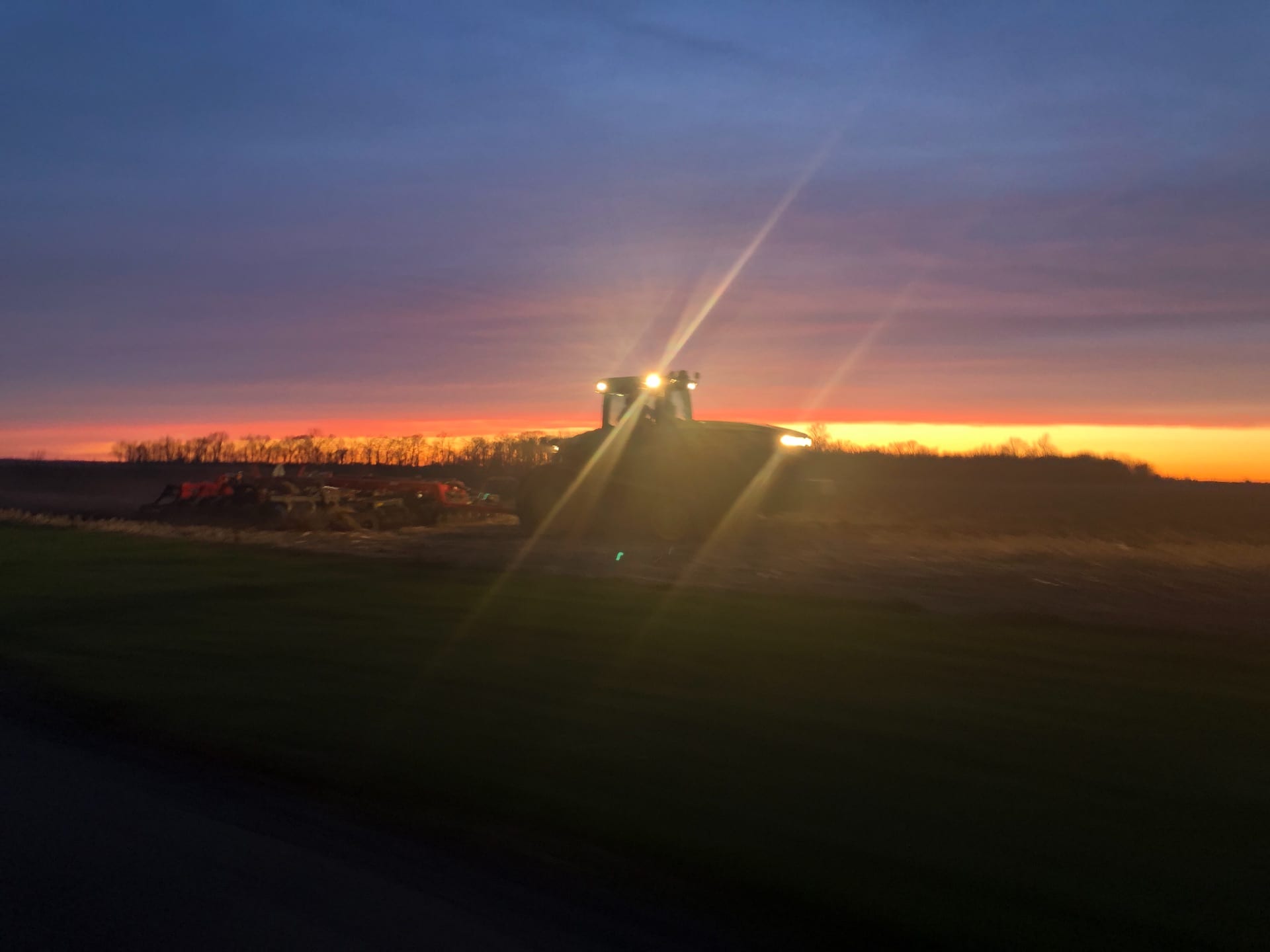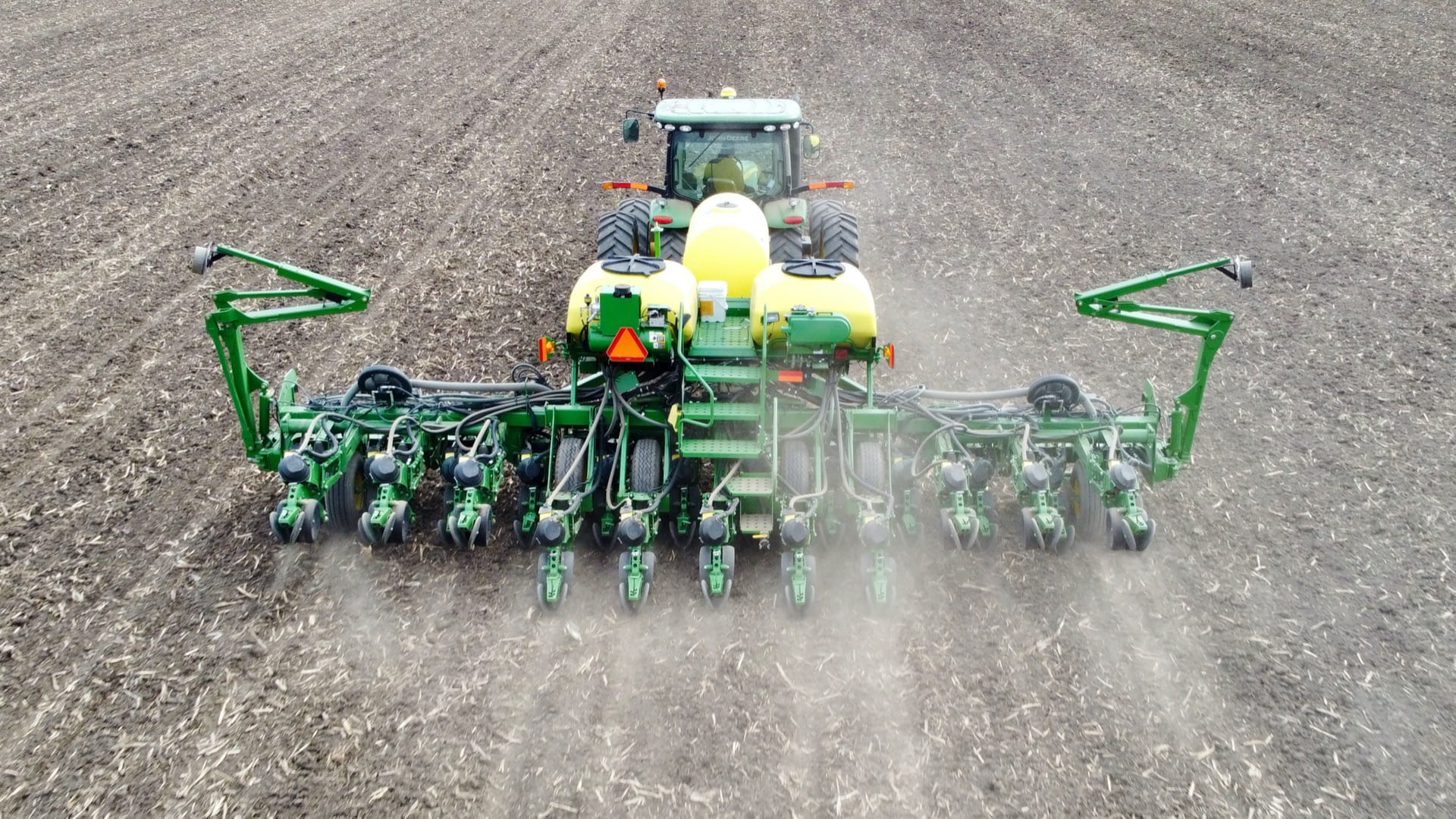This week on the Southern Ohio Farm Show, Pat Brinkman teaches us how to make apple nachos and Gigi Griffith Neal teaches us the best practices for growing potatoes. Tune in next week for another new episode!
Spring planting
Pre-Season Planter Tips
By John Fulton
Previously published in the Ohio Country Journal
With planting upon us, it is important to ensure both your planter and associated technology is ready to go. With seed costs and the desire to maximize yield potential, placing seed and fertilizer accurately and a way to eliminate mistakes including generating compaction. Checking your planter can helps it plant more uniformly and place seed at the proper depth. Having errors during the planting operation can impact yield and ultimately profitability for a field and the crop. Yield potential has a season-long cumulative negative effect of yield limiting factors (YLF’s). We frequently state that corn hybrids or soybean varieties have the highest yield potential when in the bag. University research has noted that errors at planting can impact corn yield. For example, a 10-bushel per acre gain can occur from good seed-to-soil contact. Further, uneven emergence can lead to a 5% to 9% yield reduction in corn. Therefore, seeding depth and downforce management are critical for optimization of planter performance.
With that said, the intent of the planter operation is to:
- Maintain the target seeding rate across a field,
- Obtain uniform seed spacing and good singulation, and
- Achieve adequate and uniform planting depth without compaction, supporting immediate germination and uniform emergence.
In terms of the potential for soil compaction, it is better to be a week late versus a day early. Planting a field too early most likely means the soil in particular parts of the field area could be too wet and emergence could suffer in the cold soil. Planting in front of a cold front and thereby cold rain, will impact emergence. In addition, pinch row compaction from the tractor and center transport system can occur. My suggestion is to track weather forecasts and get out in the field and look at the soil conditions. This includes getting out of the tractor to check planting depth, closing wheel settings, and looking at the quality of the seed bed. Keep in mind field conditions and weather forecasts over the next 5 to 7 days coupled with checking settings once in the field to ensure field conditions are right to maximize yield potential.
Before heading to the field, here is a checklist for the planter and technology to consider before spring planting, along with suggestions for evaluating stands once crops are emerged.
10-point planter checklist
- Check all chains and sprockets, replace as needed. All chains should be adjusted to the proper tension. Grease and oil before heading to the field, plus regularly during the planting season.
- Check opening disks for wear and proper spacing. Measure diameter and replace if too worn as outlined in the operator’s manual.
- Check bushings in parallel linkages that connect units to the maintain toolbar.
- Check each unit for sway. Wear in bushings and bolts can lead to units setting seed at an angle. Loose units will influence seed depth and fertilizer placement plus can smear the sidewalls of the seed furrow in more moist conditions.
- Depth wheels need to run tight against seed opening disks. Remember depth or gauge wheels control planting depth, so look them over and make sure they are properly set up.
- Check closing wheels to ensure they have the proper spring setting. They should not be loose or excessively tight. Also, check clearance based on the operator’s manual recommendations.
- Check tire air pressure. This is especially important on older planters. This includes the small mechanical drive wheels on some older planter models.
- Check seals on meter to ensure door seals correctly and meter outlet properly aligns with seed tube.
- Check the wear and cracks on bottom of seed tube. Cracks and wear at the bottom impact the uniformity of seed spacing.
- Look over row cleaners, checking for wear. Properly adjust height and remember row cleaners are intended to remove stover and residue out of the way for the opening disks and not to till the soil bed.
5-point technology checklist
- Make sure the firmware on the GPS receiver and in-cab display are up-to-date.
- Make sure GPS receiver offsets and planter offsets are correctly input into the display for accurate ON/OFF actuation of auto-row control and that seeding rates change in the correct location for variable-rate seeding.
- Back-up and archive past years planting data in a secure location on a farm computer, external hard drive, cloud site, or similar.
- If purchasing a differential correction, make sure your subscription is up-to-date before the planting season.
- Look over wiring harnesses and connectors for damage and loose connections.
Additional information and resources about planter technology can be found at the Ohio State University Digital Ag research page covering precision seeding: https://digitalag.osu.edu/precision-ag/research-focuses/precision-seeding.
Dr. John Fulton, Professor, can be reached at fulton.20@osu.edu.
This column is provided by the OSU Department of Food, Agricultural and Biological Engineering, OSU Extension, Ohio Agricultural Research and Development Center, and the College of Food, Agricultural, and Environmental Sciences.
Spring Planting Season Is Here, Use Caution While Driving

A local farmer uses the warm and dry weather to catch up on field preparations for the 2019 growing season.
Brooke Beam, PhD
Ohio State University Extension, Highland County
Agriculture and Natural Resources/Community Development Extension Educator
April 17, 2019
The break from the rain has provided an opportunity for agricultural producers in Highland County to work in their fields. It is a welcome change from all of the rain we have received since last fall. However, with the change in weather, it isn’t just farmers who are anxious to be outside on the roadways this spring.
Warmer, drier weather is ideal for working in the fields to prepare for spring. Since fall and winter had very wet weather conditions, many farmers in the area have not been able to work in their fields to prepare for the upcoming 2019 growing season. This means there is a spring rush to prepare fields in Highland County before the growing season starts. Farmers will be making the best use of their time this spring to be efficient so they catch up on their work.
Likewise, non-farmers are also anxious to be on the roadways enjoying the warmer air in convertibles and motorcycles. While it is completely understandable that everyone would like to be outside enjoying the change in the seasons, it is important to remember to share the roadways and use safety precautions to ensure safety for everyone utilizing the roadways this spring.
Remember that tractors are slower moving vehicles that make wide turns. Agricultural implements are large and they can have multiple blind spots, just because you can see the tractor doesn’t mean that the tractor operator can see you. Provide additional space between your vehicle and the tractor to ensure visibility. Also be sure to look for the slow-moving vehicle emblems (SMV signs) on farm equipment.
Slow down, enjoy the spring blossoms and foliage while on your travels this spring, and give adequate space for farmers who are trying to catch up with their work during dry days this spring. For more information about any of the Highland County Extension Programs, contact the office at 937-393-1918.
Upcoming Programs:
On April 23, 2019, the ninth Beef Quality Assurance training will be held in Hillsboro, Ohio. The training workshop will be held at Union Stock Yards. Dinner will be served at 5:30 P.M. and the program will be held at 6:30 P.M. Please RSVP to Union Stock Yards to reserve your seat 937-393-1958.
On Thursday, April 25th, Dr. Thomas Blaine will be presenting on Global Climate Change and its impacts predicted through 2050. Dr. Blaine is an Associate Professor at The Ohio State University. Dr. Blaine will discuss the history of climate change, current trends, and outlook. He will discuss how climate change is and will apply to everything from our lawns, to our farms, and our everyday life through 2050. This program is free to attend, however, RSVP to reserve your seat by calling 937-393-1918.
Tuesday, April 30, 2019, a live-broadcast forage webinar with Christine Gelley, ANR Extension Educator from Noble County, will be held at 5 P.M. in the Large Meeting Room in the basement of 119 Governor Foraker Place, Hillsboro, OH. Gelley will discuss a variety of forage-related topics to help you prepare for the 2019 growing season and upcoming winter. This program is also free to attend, but RSVPs are encouraged to reserve your seat by calling 937-393-1918.
A Hands-on filmmaking workshop will be held on Tuesday, May 21, 2019, at 3 P.M. at the Lynchburg Library. Bring your own camera and tripod for this walking filmmaking workshop. RSVP to the Highland County Extension Office at 937-393-1918.
A Hands-on filmmaking workshop will be held on Tuesday, May 21, 2019, at 3 P.M. at the Lynchburg Library. Bring your own camera and tripod for this walking filmmaking workshop. RSVP to the Highland County Extension Office at 937-393-1918.
A Video Editing Workshop will be held on Tuesday, May 28, 2019, at 3 P.M. at the Lynchburg Library. This workshop will teach basic editing principles on both laptops and mobile devices. Bring your own computer or mobile device to participate. RSVP to the Highland County Extension Office at 937-393-1918.
The Germinate International Film Fest will be accepting submissions through June 30, 2019. The festival will be held on August 16 & 17, 2019, in Hillsboro, Ohio. For more information or to apply visit https://filmfreeway.com/GerminateInternationalFilmFest. Contact Brooke Beam at the Highland COunty Extension Office for more information at 937-393-1918.
